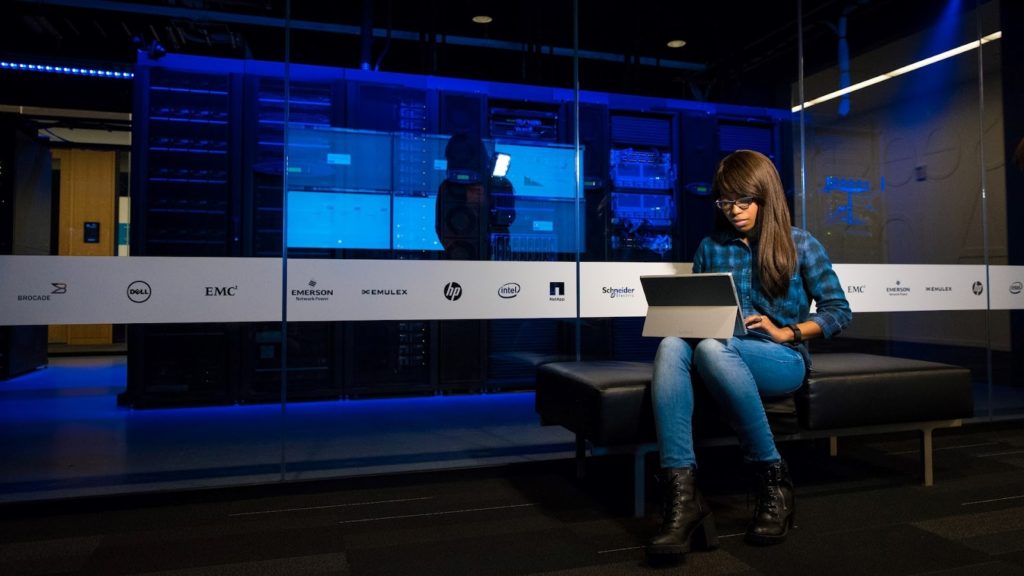
Source: ThisisEngineering RAEng via Unsplash.com
In an interview with the BBC, Apple CEO Tim Cook decried the lack of women in tech. He even said that no excuse can justify it. Many have attributed the statement as PR for Apple’s recent iPhone products. However, the subject has long been a hot-button issue in the tech industry.
The following statistics paint the picture of where things stand in the US on women in tech. Women comprise:
- 33% of the tech workforce
- 25% of technical roles
- 10% of tech founders
These figures might not sound like much of a problem for small sectors of the economy. But, for a large sector such as tech, it’s a huge gap.
Comparatively, sales have 45% female representation in its workforce. An increase in the number of tech jobs for women can boost equality.
Nice Words and Platitudes
Activists and researchers say industry CEOs have long been making positive comments about women in tech. But, the high-talk means little if CEOs don’t back this with plans to increase tech jobs for women.
Diversity and equality are today’s buzzwords but remain mere symbolic gestures. It’s harder for women to get tech jobs and retain them.
In Apple’s case, the recent return to office order was bad news for its female employees.
The work-from-home arrangement removed many of the obstacles for women in tech. Return to office orders may force women to leave their jobs for roles with better work-life balance.

Source: wocintechchat.com via Unsplash.com
Cultural Barriers to Women in Tech
Legally, women have no barriers to entry into tech. However, the US still has cultural barriers against women in tech. These barriers are collectively known as the glass ceiling.
Primarily, stereotypes regard women as unfit for excelling in tech education. Additionally, technology colleges are male-dominated and offer fewer amenities to draw female students.
Further, traditional stereotypes bar women from doing certain jobs. The modern tech startup space is rife with sexism and discrimination against women. Such environments make it harder for women to excel in tech through hard work and talent alone.
Finally, women have to contend with cultural expectations of child care. These cultural pressures follow a woman into her late twenties and beyond. Unfortunately, that’s also the prime age for tech specialists to improve in their field.
Objective Reasoning
Concededly, objective reasons also exist for why tech does not have as many women in the workforce. Primarily, young women just have better options in certain situations.
Research shows males and females have the same aptitude for science, technology, engineering, and mathematics (STEM). But, on average, females have a better aptitude for language and communication than males.
As a result, many young women choose to work in the communication sector. These fields offer better positions to young professionals and have less competition. However, STEM fields provide better incentives for senior roles.
Another issue is work-life balance. Even Apple’s CEO mentioned that his work-life balance was ”not great”. Even with good pay, tech jobs frequently lead to burnout because of work overload. Over 50% of new hires are burnt out by the end of their first year.
With such high rates of burnout, it’s rational to assume that tech does not attract many people, especially women.

Source: wocintechchat.com via Unsplash.com
Simple Ways to Attract Tech Talent
Instead of high-talk around workplace gender equality, executives should work on solutions. These solutions should focus on bringing more women into tech. For instance, women mention fair working conditions and good pay as employment incentives.
The startup space is a bit more problematic. Tighter social circles make it difficult for women tech founders to secure funding and top talent.
Despite that, women will work in tech with a good offer and a visible incentive in the field.
Thus, the simplest way to attract more women into tech is to offer work-life balance or increase pay.
But, if companies increase women’s salaries, they should also increase men’s. We only have to refer to Google’s mistake from 2019 to avoid repeating a similar situation. During a gender inequity probe, they found Google was underpaying the male employees.
Too Little, Too Late
The biggest gender equality criticism is that efforts are too slow to matter in the long run. Since the industry is growing fast, workforce representation may reach a 50/50 split without women seeing the benefits.
Namely, companies with amazing workplaces and diversity policies also have lower-paying jobs and fewer progression options. This situation doesn’t incentivize existing female specialists to embrace their jobs.
Finally, companies can adapt their current positions to fit young female experts better. Doing so will increase the number of women in tech and talent overall. Plus, it resolves the cultural barriers women currently face.



